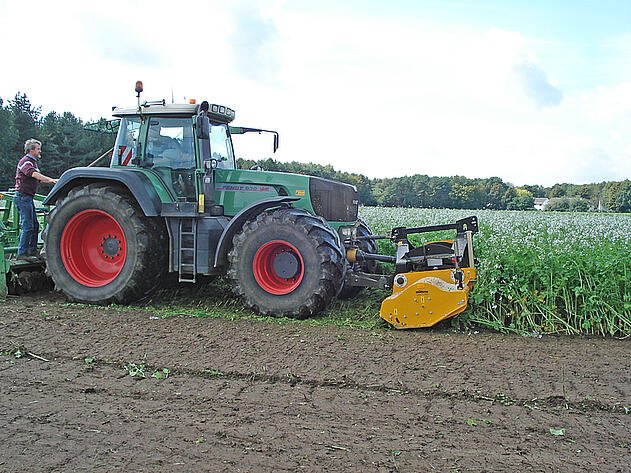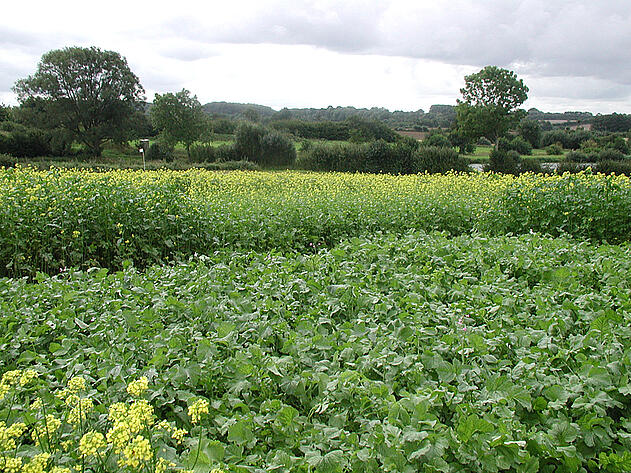Biofumigation is defined as the use of biologically active plant substances to control soil-borne pests and diseases in agriculture and horticulture.
Soil-borne diseases are on the rise. Since chemical pesticides are being increasingly regulated, biofumigation is becoming more important as a part of integrated pest management, particularly in horticulture and intensive cultures. The technique is useful f
- suppressing certain soil-borne pathogens
- bringing more flexibility to crop rotation
- harnessing the positive effect of catch crops
- organic farming greenhouse cultivation
Proven advantages of catch crop cultivation are promotion of the soil's water-retention capacity, structure and aeration. By additionally applying the biofumigation technique, you can introduce plant substances into the soil, where they help to combat soil-borne diseases.
Cruciferous plants contain glucosinolates, which is at its highest concentration when the plant is flowering.
When the plants are finely chopped (chaffed) and worked into the soil, the glucosinolates are converted enzymatically into isothiocyanates, the actual active ingredients. These target the active stages of pests such as fungal mycelia, mobile nematodes or germinated weeds.
If your primary aim is to target fungal diseases and weeds, the viterra® blend BIOFUMIGATION, which contains a high proportion of Indian mustard (Brassica juncea), is the best, as it grows very quickly and builds up a high concentration of isothiocyanates within 6 - 8 weeks.
For additional nematode control, we recommend the use of our multiresistant oil radish varieties DEFENDER and CONTRA, which already begin to control nematodes during their growth phase and, through biofumigation, also combat fungal diseases and weeds.
Seedbed:
Careful seedbed preparation is essential to create optimal growth conditions. The viterra® blend BIOFUMIGATION and the multi-resistant oil radish varieties DEFENDER and CONTRA initially develop very quickly, promoting natural weed suppression.
Sowing time:
Outdoor cultivation: from April to September. Seeding is possible in frost-free periods. Greenhouse cultivation: Independent of season.
Seed quantity:
viterra® BIOFUMIGATION: 15 kg/ha
multiresistant oil radish DEFENDER/CONTRA: 30 kg/ha
Seed depth:
1-2 cm deep
Soil fertilisation:
For the highest possible biomass formation and glucosinolate content, 60-80 kg N/ha and 50-60 kg of S/ha should be applied to normally nourished soils. Sulphur fertilisation is particularly important, as glucosinolates require S-containing compounds - the plant needs to draw the sulphur from the soil to produce the glucosinolates.
Incorporation:
When the plants are flowering (60-80% of the stand is in blossom), the glucosinolate concentration in the biomass is at its highest. The above-ground growth must then be chaffed as finely as possible to break down all the plant cells and thereby release the maximum amount of glucosinolates. The chopped plant material should be immediately worked into the soil at a depth of 15-20 cm (e.g. by rotary cutter, disc harrow or spading machine). To ensure the active substances remain in the soil as long as possible, we recommend sealing the soil surface by gentle rolling, or, if possible, by 20-30 mm of irrigation. Ideally, chaffing, working in and rolling should be carried out in one working step.
Succeeding crop:
To avoid damage to the following crop, the seeding or Planting date of the succeeding crop should be at least 14 days after the start of biofumigation.



